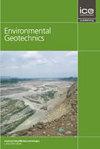地质力学数据异常值检测方法综述
IF 2.2
4区 工程技术
Q3 ENGINEERING, GEOLOGICAL
引用次数: 3
摘要
地质力学模型和工程设计的可靠性在很大程度上依赖于高质量的数据。在地质力学项目中,收集和分析实验室数据对于表征土壤和岩石的力学特性至关重要。然而,不充分的实验室数据或低估数据处理可能导致在设计阶段使用不可靠的数据,从而导致安全隐患、延迟或失败。因此,检测异常值或极值对于确保准确的地质力学分析具有重要意义。本研究将适用于地质力学数据的异常值检测方法分为栅栏标记法和统计检验两类。利用真实地质力学数据,从数据分布、对极值的敏感性、样本量和数据偏度四个方面考察了这些方法的适用性。结果表明,由于处理偏态数据和样本量小的限制,统计检验在检测地质力学数据中的异常值方面不如栅栏标记方法有效。因此,最好的离群值检测方法应该考虑到这个问题。围栏标记方法,特别是中间偶箱线图和半四分位距离规则,被认为是最准确的地质力学数据异常检测方法,但可能需要更先进的统计技术。此外,由于负置信区间与地质力学原理相冲突,Tukey的箱线图被发现不适合地质力学数据。本文章由计算机程序翻译,如有差异,请以英文原文为准。
Review of Applicable Outlier Detection Methods to Treat Geomechanical Data
The reliability of geomechanical models and engineering designs depend heavily on high-quality data. In geomechanical projects, collecting and analyzing laboratory data is crucial in characterizing the mechanical properties of soils and rocks. However, insufficient lab data or underestimating data treatment can lead to unreliable data being used in the design stage, causing safety hazards, delays, or failures. Hence, detecting outliers or extreme values is significant for ensuring accurate geomechanical analysis. This study reviews and categorizes applicable outlier detection methods for geomechanical data into fence labeling methods and statistical tests. Using real geomechanical data, the applicability of these methods was examined based on four elements: data distribution, sensitivity to extreme values, sample size, and data skewness. The results indicated that statistical tests were less effective than fence labeling methods in detecting outliers in geomechanical data due to limitations in handling skewed data and small sample sizes. Thus, the best outlier detection method should consider this matter. Fence labeling methods, specifically, the medcouple boxplot and semi-interquartile range rule, were identified as the most accurate outlier detection methods for geomechanical data but may necessitate more advanced statistical techniques. Moreover, Tukey’s boxplot was found unsuitable for geomechanical data due to negative confidence intervals that conflicted with geomechanical principles.
求助全文
通过发布文献求助,成功后即可免费获取论文全文。
去求助
来源期刊

Environmental geotechnics
Environmental Science-Water Science and Technology
CiteScore
6.20
自引率
18.20%
发文量
53
期刊介绍:
In 21st century living, engineers and researchers need to deal with growing problems related to climate change, oil and water storage, handling, storage and disposal of toxic and hazardous wastes, remediation of contaminated sites, sustainable development and energy derived from the ground.
Environmental Geotechnics aims to disseminate knowledge and provides a fresh perspective regarding the basic concepts, theory, techniques and field applicability of innovative testing and analysis methodologies and engineering practices in geoenvironmental engineering.
The journal''s Editor in Chief is a Member of the Committee on Publication Ethics.
All relevant papers are carefully considered, vetted by a distinguished team of international experts and rapidly published. Full research papers, short communications and comprehensive review articles are published under the following broad subject categories:
geochemistry and geohydrology,
soil and rock physics, biological processes in soil, soil-atmosphere interaction,
electrical, electromagnetic and thermal characteristics of porous media,
waste management, utilization of wastes, multiphase science, landslide wasting,
soil and water conservation,
sensor development and applications,
the impact of climatic changes on geoenvironmental, geothermal/ground-source energy, carbon sequestration, oil and gas extraction techniques,
uncertainty, reliability and risk, monitoring and forensic geotechnics.
 求助内容:
求助内容: 应助结果提醒方式:
应助结果提醒方式:


